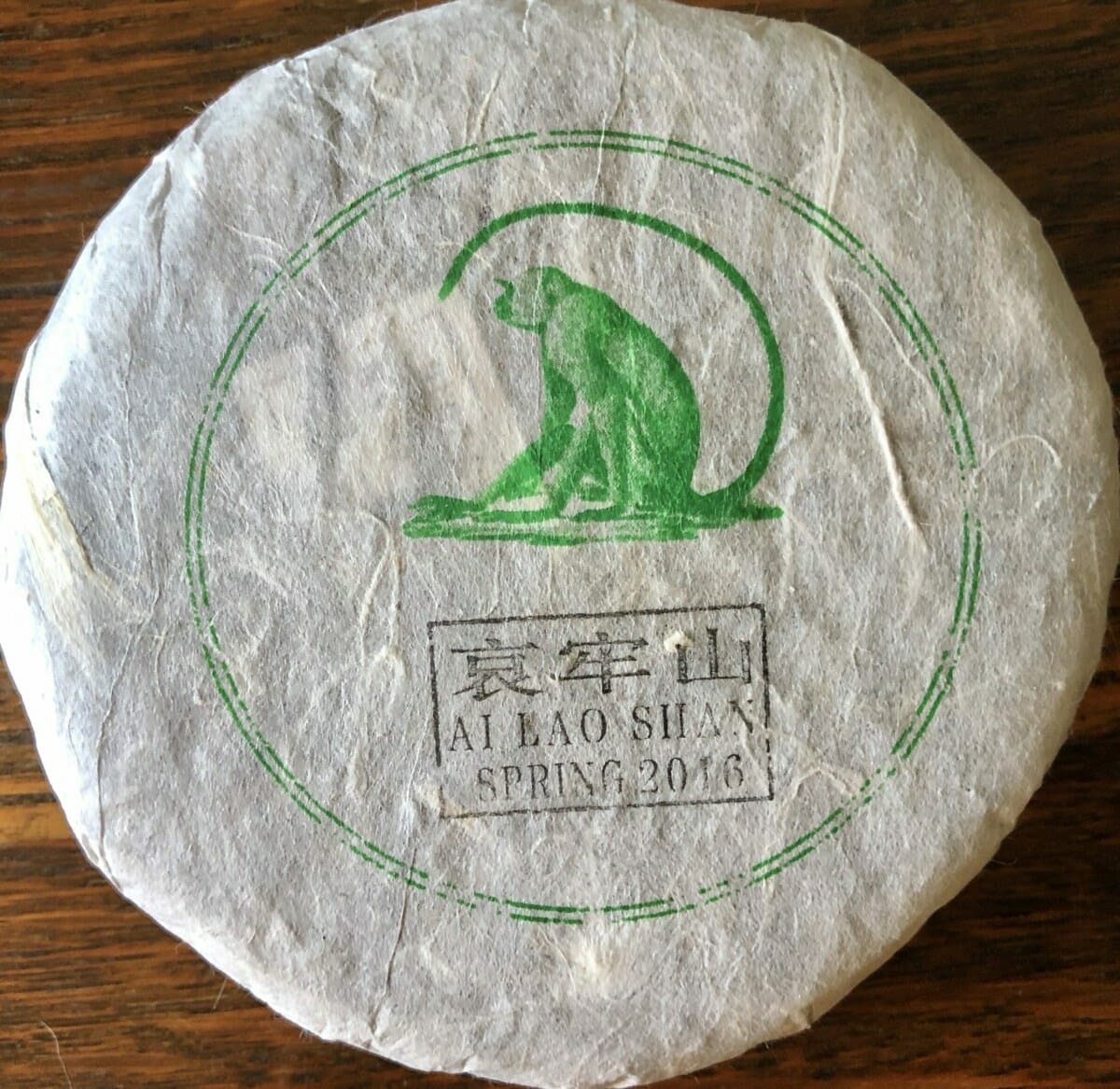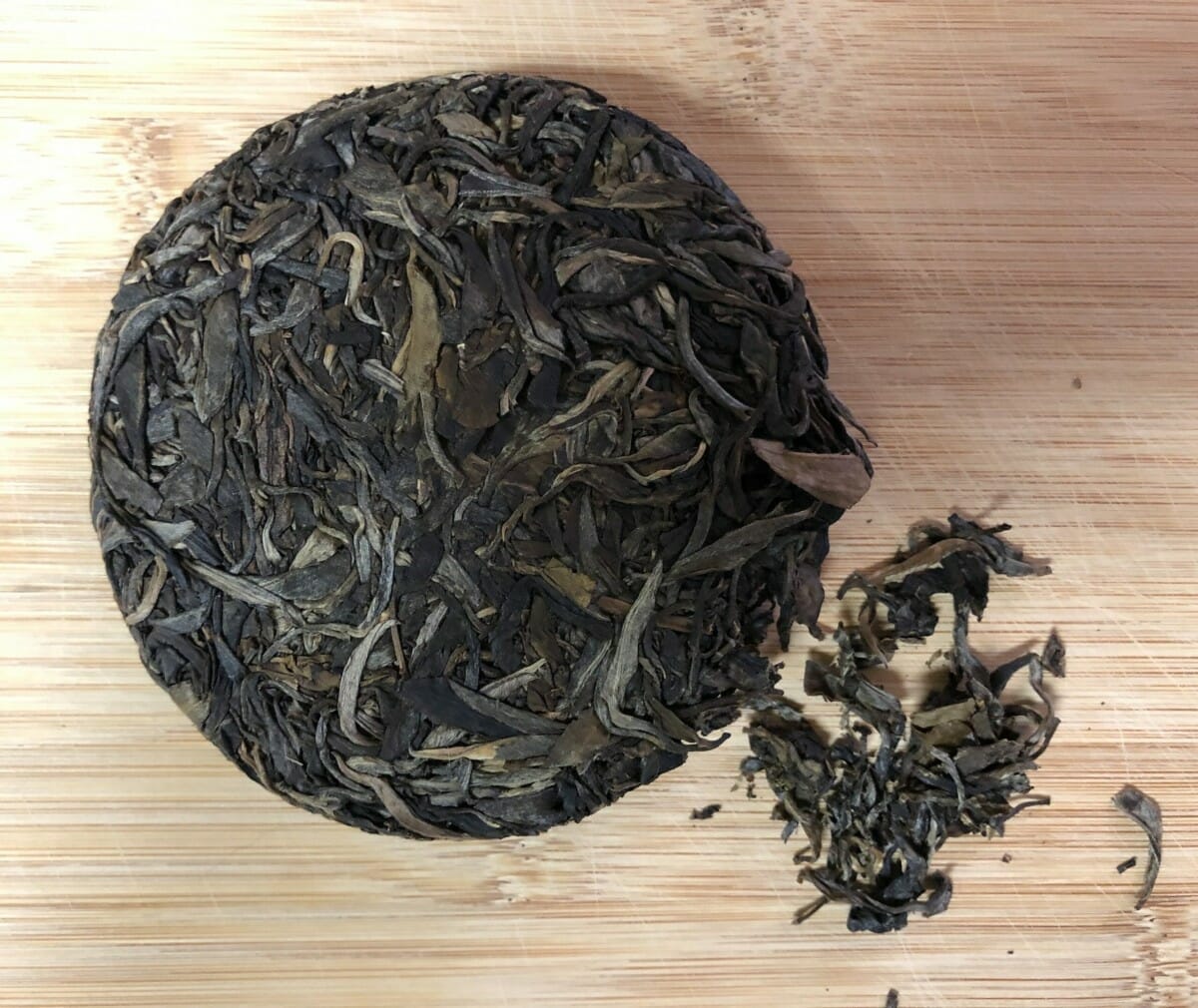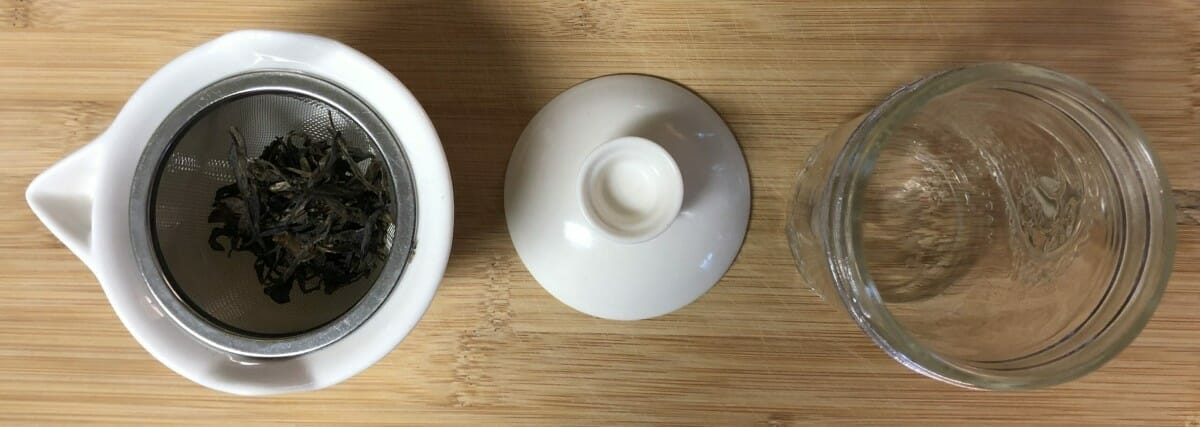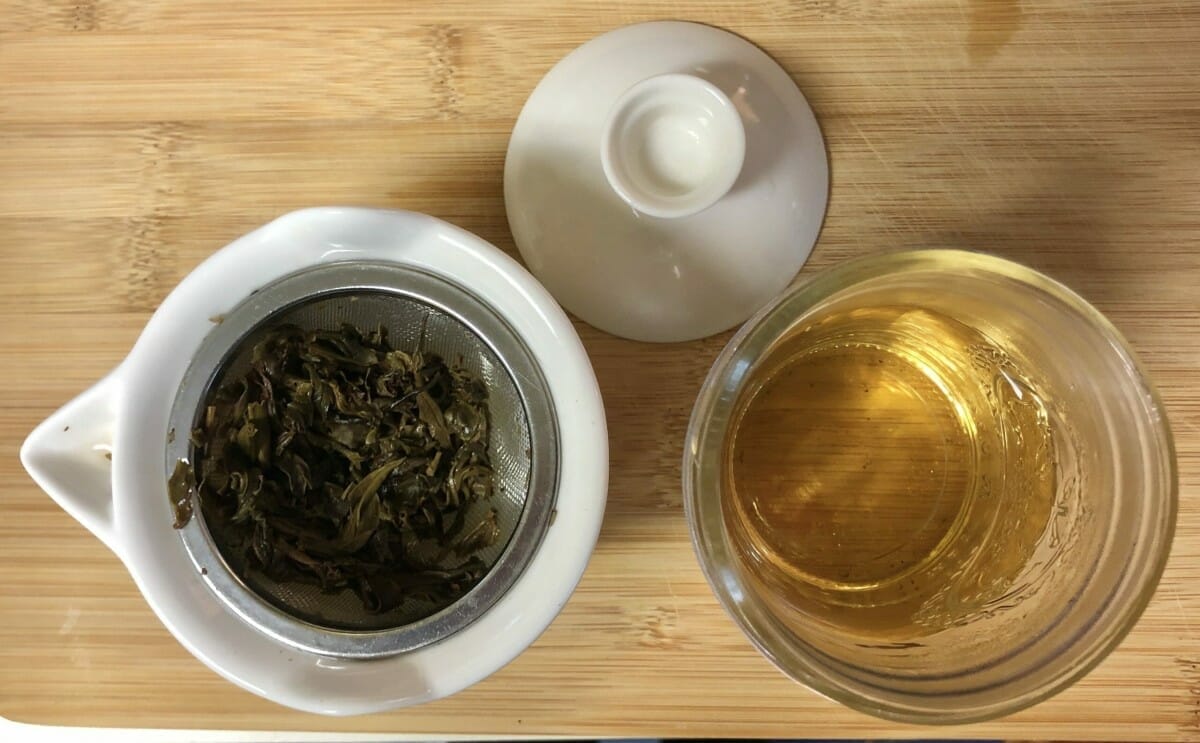No products in the cart.
Tea
Puer Cake Tea Analysis: 2016 Ai Lao Shan Raw

In this puer cake tea analysis we’re introducing you to 2016 Ai Lao Shan Raw puer cake. This tea comes to us from Ban Po Xin Zhai, Xishuangbanna Prefecture, in Yunnan Province, China. It is a raw Puer, from the plant Camellia sinensis variety assamica. The leaves were plucked from bushes on Ai Lao Mountain in 2016, then withered (dried) until they are at about 50-60% moisture. They are then pan-fired (or fixed) which halts the oxidation process. The leaves are then rolled to release the aromatic oils and dried either in the sun or using mechanical driers. Drying them fully helps to stabilize these aromatic oils. Afterwards they are re-moistened using steam to make it easier to compress them into cakes. They are finally wrapped and marked with the nei fei, a piece of paper pressed into the cake for traceability. The cakes are then stored under carefully monitored conditions to ferment for several years, much like wine. The monkey on the packaging reflects the Chinese horoscope sign for this year (fire monkey.).

The name Puer comes from a town called ‘Puer’ in the Yunnan Province of China. This town was a hub for travel and trade. Puer tea came about as a solution to transport tea easily by horseback. Although Puer was originally developed out of need. In recent years it has become a favorite for tea connoisseurs. This is due to its uniqueness, it is one of the only teas that is intentionally aged and one o the few that are fermented. This specific tea cake is considered a Sheng or Raw Puer which means it was ‘naturally’ fermented and aged, as opposed to a Shou or ripe Puer which is fermented rapidly by wet-piling the leaves and turning them to partially compost the tea and create a flavor that mimics that of a raw puer.
For this tea we chose to drink it gongfu style, using a Royal NY Gaiwan. This classic style allows us to explore all that this tea has to offer over multiple steeps.


Steep 1: Sasparilla, green beans, crisp and clear, with forest elements
Steep 2: Vanilla, cinnamon, autumn leaves, molasses
Steep 3: More floral, aromatic, candy sweetness, minerality, dried pear
Steep 4: Floral, banana leaf, sweet finish

This tea is available for purchase here.
For a brief guide to Puer, check out this blog



